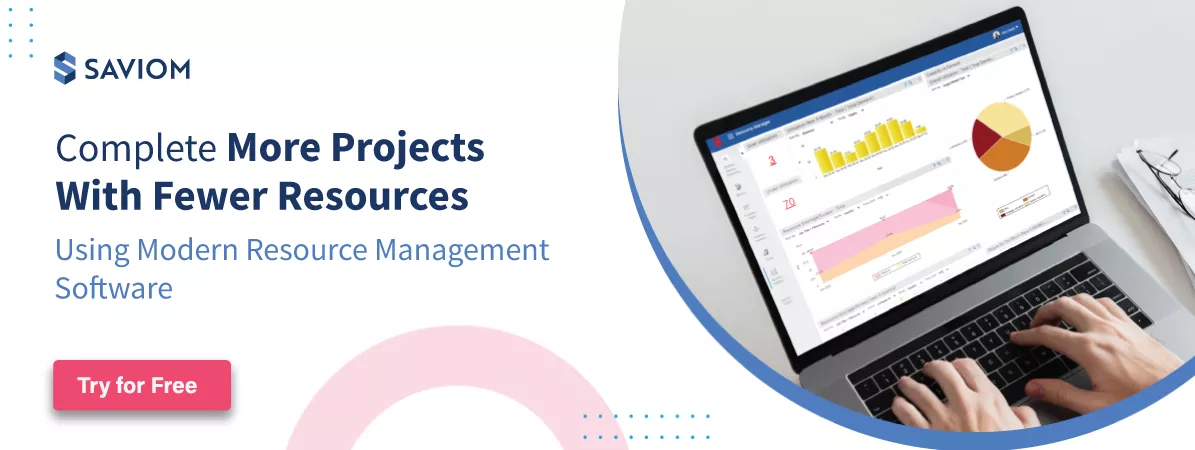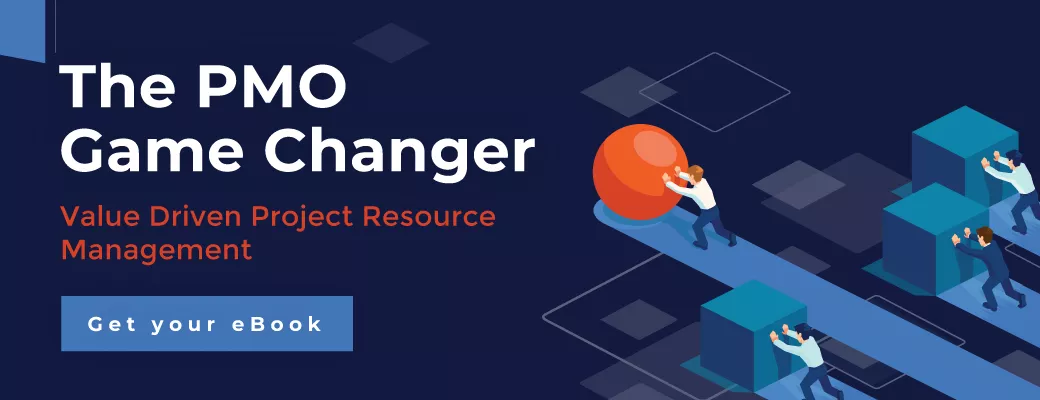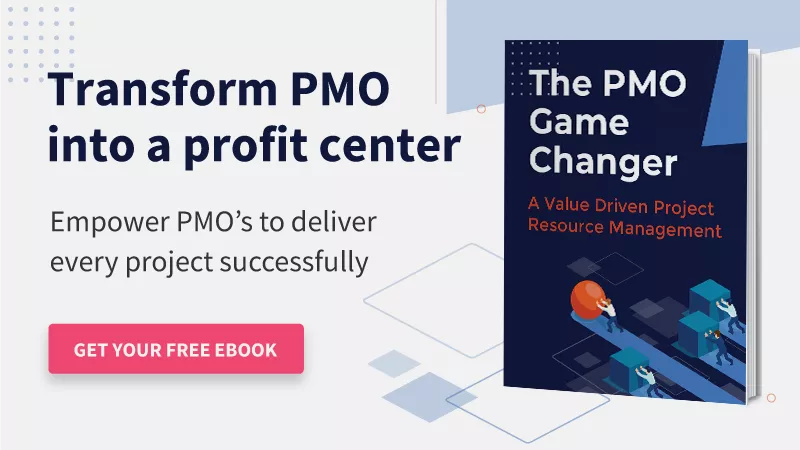A business thrives when each project is delivered successfully. Selecting and executing suitable projects as per its workforce’s capacity and capability is the stepping stone towards the firm’s ultimate vision. With the ongoing diversification, enterprises are expanding their horizons and undertaking multiple projects to form a portfolio.
However, it is not as easy it sounds. When there is an entire portfolio to supervise, it becomes challenging to monitor every project metric diligently.
It is of utmost importance that program and project managers form a definitive framework to standardize the management process. Managers invest significant time and resources in creating a project portfolio management strategy as a part of BAU activities to make an organization successful.
A PPM strategy sets the ground for profitable and strategically aligned projects while also catering to efficient resource management. It offers a myriad of benefits to managers and organizations as a whole by enhancing the overall efficiency.
This blog focuses on the numerous benefits that an effective PPM strategy provides to project managers.
But first, let’s start with the definition
Project portfolio management (PPM) is the process used by project managers and PMOs to analyze a project’s potential and formulate a plan to manage each project. The PPM process consolidates the existing data, forecasts pipeline opportunities, and provides all the information in real-time. The unified management strategy is where all the projects are managed under one umbrella, called a portfolio.
According to the Project Management Institute,
“Project portfolio management is the centralized management of one or more portfolios that enable executive management to meet organizational goals and objectives through efficient decision-making on portfolios, projects, programs, and operations.”
A successful project portfolio management framework includes:
- Identifying and evaluating potential projects
- Approving future projects.
- Assigning project managers to the approved projects
- Including them in the overall portfolio.
PPM’s critical focus is to ensure that the portfolio’s outcomes support the organization’s strategic goals. PPM tools and techniques capture quantifiable information such as return on investment and operational efficiency, comparing them against the delivered business value.
According to the PMI,“94% of high-maturity organizations noticed a tangible impact after implementing the PPM strategy.”
This number tells us that introducing project portfolio management can impact the overall project management process and enhance organizational efficiency.
Now that the definition is clear let’s understand the benefits that PPM offers.
Benefits of Project Portfolio Management
Benefits of project portfolio management include a holistic approach that monitors project status and health, their interdependencies, and the performance of resources assigned to the projects. PPM provides real-time updates of the project metrics and enhances the efficiency of the overall process.
Here is a rundown of the key benefits of project portfolio management.
Align project goals with business strategy
The ultimate mission of any firm is to meet the strategic and short-term goals. And every project that a firm undertakes is a step towards that goal. Thus, project managers must ensure that projects are aligned with business strategy and objectives. If the projects do not align with these set goals, it leads to project overload, waste of company resources, and workforce efforts. Without this linkage with the long-term motives, the project portfolio is practically blind to the organization’s needs.
Project portfolio management (PPM) emerges as a method to manage this puzzle. The core of the strategy lies in evaluating, prioritizing, and selecting a project which is in line with the business strategy. PPM helps put things in perspective and supports making tough decisions based on the company’s vision.
Informed decision-making
Project portfolio management provides high levels of visibility both from a strategic and a tactical perspective. It provides insights into past project metrics such as project costs, profitability, duration, quality, and resource usage. It improves predictive analysis for better resource utilization and risk management, as well as project selection.
An effective project portfolio management strategy lends weight to your decisions by generating data in real-time, preparing you to address every project-centric activity.
Traversing the project portfolio gives you a project history that reflects the symbiotic relationship between people and projects. The data-driven insights facilitate managers to make informed decisions and draw findings, contributing to overall portfolio success.
Read More: How to Manage Resources in Agile Project Management?
Improved project selection process
Often, companies have an unclear selection criterion for the new projects. The lack of information makes it difficult to assess the project as per the company strategy. Not every project can align with the strategic goal, and neither can all prove to be profitable.
Moreover, once a project fails, the company initiates additional small projects to compensate for the failure. It makes project management more complex, and the project portfolio starts to lose strategic alignment and value. This inability to focus results in:
- Too many small, low-impact projects.
- A plethora of projects for the limited resources available causing burnout.
- Poor project prioritization.
- Inadequate data on projects.
- High project failure rate.
Project portfolio management helps select the right set of projects that allow businesses to adhere to goals, resource availability, and other criteria. PPM strategy forms a well-defined framework for every process, and the same goes for project selection. With a formulated criterion in place, managers have a model to select the right project.
PPM evaluates and picks the project that will deliver maximum value to the organization. Using various techniques such as ranking methods, scoring models, and other heuristic methods, PPM ensures that approve/do-not approve (go/no-go) decisions are based on relevant and well-defined criteria rather than vague factors or guesstimations.
You can identify those projects that don’t contribute to the firm’s objectives and remove them from the portfolio.
Read More: 5 Project Selection Criteria to Structure the PMO
Minimize risks, maximize business impact
The word risk has a robust negative ring to it, but it simply happens to be inevitable at times. The likelihood, type, and impact of different risks cause you to look for alternatives through an effective risk management plan, so that project delivery isn’t completely derailed.
Risks have financial and program implications, meaning that minimizing them prevents you from miscalculating gross efforts required for upcoming and current projects. Project revisions stretch your budget and delay both your resources and project delivery.
The PPM strategy detects budget deviations between planned and actual work in real-time, helping you avoid financial risks after a project commences. It contains standardized project management methods and processes centered around a dependable framework.
The estimation tools sitting within PPM routinely analyze costs versus benefits, helping your project management office identify wayward projects. The sooner they’re placed, the sooner your risks are reduced too.
PPM alerts you to overexposure to non-viable efforts by indicating potential budget overruns, schedule delays, and technical inadequacies. It prevents these risks from carrying through to project delivery, thus leaving you with high-value, low-risk projects.
Read More: Enterprise Risk Management Framework: 8 Core Components
Optimal resource utilization across the enterprise
PPM mobilizes your resources to invest their best and maximum efforts into the most feasible ventures. In simple words, this means duplicate efforts are not wasted on activities with no monetary benefits to show for them.
The degree of visibility mentioned earlier helps you assess the need and demand for different skills along with future resource availability. You can exercise control over resource utilization and allocate an optimal workload to each resource. With resourcing costs being an actual spend, you can reduce both bench-time and overhead by upskilling and retraining them for multi-faceted projects.
Competent resource allocation gives your organization the ability to make the best use of available resources and their expertise by deploying them onto the highest priority projects.
A comprehensive overview of utilization rates and availability lets you arrive at resource-centric conclusions in a managerial capacity.
Resource profiling, for example, gives you an updated skills inventory, ensuring that peak demand periods don’t suffer from a skills shortage. It scans capacity and redistributes talent in scientifically measured proportions across several projects.
Forecasting project demand to this resource capacity lets you spread your resources out on worthwhile projects without over or underwhelming them.
Read More: Maximize Profitable Resource Utilization with Modern Resource Management Solution
Deliver projects within time and budget
Most projects fall victim to overspending due to poor cost estimation, mismanaged resource allocation, or miscommunicated project scheduling. Besides overspending, these factors also result in project delays.
It is essential to deliver projects fast, and within the budget, so you start reaping your benefits, and your organization has the bandwidth for other beneficial tasks.
Advanced PPM tools use Business Intelligence to provide intuitive reports like forecast vs. actual cost, forecast vs. actual utilization, real-time availability, and so on. It provides an overview of any deviation from planned to real scenarios instantaneously. With real-time updates like these, managers can take corrective actions well in time to avoid a catastrophic effect on the project’s progress.
At the same time, these reports also factor in past project successes and current project scope, mitigating overspending on projects. Also, a PPM can reduce project delivery time significantly. A study reveals that PPM allows project managers to minimize project elapsed time by around 10%
PPM technology aligned with rich governance, workflow, and standardization allow team members to keep the workflow flowing and increase productivity.
Increased ROI
ROI is the revenue/profit generated after the deployment of the project. Any organization has a goal to achieve increased returns.
By investing in portfolio management tools and training your people, it becomes possible to improve the project success rate, make cost-saving decisions. A PPM helps clarify the broader company goals, improve resource management, and increase its productivity and agility. With PPM, project investment is more likely to pay off and set companies on better footing for the future.
Also, with the help of a PPM, you can cut down resourcing costs. You can forecast the shortfalls and hire cost-effective global resources, ensuring that you have the right resources for your future projects.
PPM solutions enable companies to identify the best investment opportunities and efficiently manage them from design to maintenance to maximize ROI.
Read More: 5 ways to Reduce Project Management Costs
Boost productivity with enhanced team collaboration
A PPM solution provides a real-time view of the progress of projects to all the stakeholders. Project managers have easy access to team members. Everyone has a personal dashboard and an updated Gantt chart that provides a visual view of the work’s progress, the different phases’ and their interdependencies. Team members can upload documents on a single tool and make them accessible to everyone. These features greatly enhance collaboration across teams or departments.
Project portfolio management also helps spread a common project culture across all teams. A typical project culture consists of shared norms, beliefs, and project team assumptions. With the help of common project culture, project managers understand the priorities, status of different projects, and their alignment with their objectives. These functions encourage every employee to adhere to a standard methodology facilitating cross-company cooperation.
A shared project culture also promotes quick problem-solving as it keeps every stakeholder, manager, and team member in the loop and allows them to share different perspectives.
Read More: 11 Ways to Improve Cross-Departmental Collaboration
Effective management of operations teams across the project
Operations teams are responsible for overseeing, directing, and managing business operations such as accounting, manufacturing, support, etc. They ensure that customers’ requirements are met with optimal resource usage.
During a project’s life cycle, the project team interacts with the operations team at various moments. For instance, at the phase of developing a new product or upgrading a product, both these teams need to exchange information to deliver the project successfully. There are four areas for which operations and project managers have to work cohesively:
- Budget
- Schedule
- Staff Management
- Skills Development
The PPM tool helps you improve operational prowess with smart and competent resource planning and allocation. It provides a start-to-end systematic management process. The analytics you can typically draw from a PPM tool include:
- Overall utilization rates of operations teams.
- Skill surplus or deficit reports.
- Projects that are facing a resource crunch.
- People who are likely to be underutilized.
- Availability statuses across departments.
Creating assets and sharing best practices
High-value projects align strategically with the organization’s long-term goals. Effective portfolio management collects information from those past project initiatives and successfully delivered business value.
It explores the probability of similar projects flowing in the pipeline, preparing your resources to obtain the appropriate briefing and training beforehand.
PPM consists of methods that factor in the scale, complexity, duration, and deliverables of a project. These methods help you manage the assets better and create practices that you can share throughout future projects. With an effective PPM strategy, you can leverage the processes and lessons learned from previous projects. A central repository of historical and real-time data helps you prioritize tasks, preventing ‘guesstimations’ from wrecking them. All this cumulatively forms a full-proof and improvised plan enhancing the probability of success.
Read More: Top Ten Resource Management Best Practices for Business Efficiency
Conclusion
PPM applies the needed strategic planning, resource scheduling and management, and monitoring for all projects. An intuitive project portfolio management software bridges the gap between company goals and project implementation and provides an effective system with countless advantages.
Moreover, departmental teams will be guided by a combination of experiential instinct and PPM guidance to deliver projects that accrue business value.
What does your PPM strategy look like?
SAVIOM Solution
SAVIOM has over 20 years of experience helping multinational clients manage their resources efficiently and effectively. With over 20 years of experience, this Australian-based MNC has a global presence across 50 countries and has helped 100+ clients meet their specific business goals. Saviom also provides tools for project portfolio management, professional service automation, and workforce planning software. So, SAVIOM can help your business to establish an efficient system geared towards your specific business challenges.












